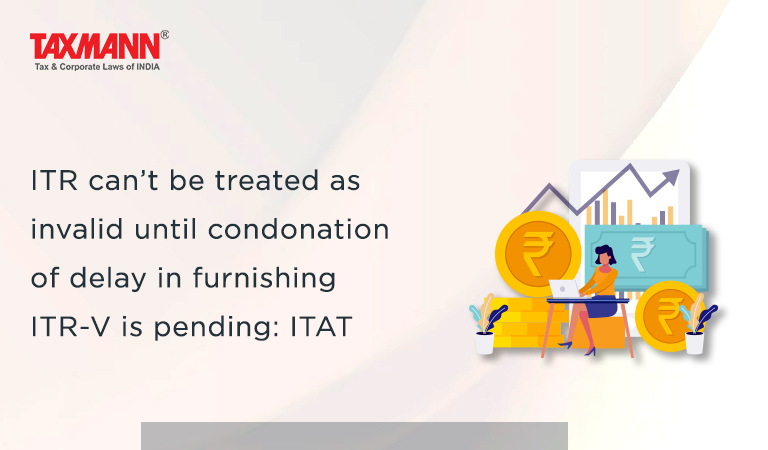ITR can’t be treated as invalid until condonation of delay in furnishing ITR-V is pending: ITAT
- Blog|News|Income Tax|
- 2 Min Read
- By Taxmann
- |
- Last Updated on 16 March, 2023
Case Details: Anagha Vijay Deshmukh v. DCIT - [2023] 147 taxmann.com 477 (Pune-Trib.)
Judiciary and Counsel Details
-
- R.S. Syal, Vice President & S.S. Viswanethra Ravi, Judicial Member
- Ms Seema M. Lonkar for the Appellant.
- Ramnath P. Murkunde for the Respondent.
Facts of the Case
Assessee, a non-resident, filed its return of income by declaring income from rent and interest and claimed to carry forward of losses under the head’ Capital Gains’. Further, the claim of carry forward of losses was enhanced by assessee by filing revised return. The return was processed under section 143(1), and the claim for carry forward of loss was denied contending the original return filed was invalid as the assessee failed to submit the acknowledgement of the original return to the Central Processing Centre (CPC).
The aggrieved assessee preferred an appeal to the CIT(A) but all in vain. The matter then reached the Pune Tribunal.
ITAT Held
The Tribunal held that the assessee had furnished its original return well within the prescribed time, and the claim of carry forward of losses was denied only on the ground that the original return filed by the assessee was invalid for non-sending of acknowledgement to CPC.
The requirement of furnishing the return electronically had another procedural requirement of taking a printout of such electronically filed return and sending it to the CPC as an acknowledgement of having furnished the return electronically.
This second requirement of sending an acknowledgement of filed return to the CPC is only directory, and non-compliance, or late compliance of that cannot invalidate the compliance of the first mandatory requirement, to make an otherwise valid return a non-est.
Since the procedural requirement of furnishing the acknowledgement is only a directory requirement, one cannot equate its non-submission on the one hand with not filing the return at all.
Further, the assessee filed the request to condone the delay for non-furnishing acknowledgement in the material time, which was still pending before the board. Thus, the original return filed by the assessee can’t be treated as invaild.
Disclaimer: The content/information published on the website is only for general information of the user and shall not be construed as legal advice. While the Taxmann has exercised reasonable efforts to ensure the veracity of information/content published, Taxmann shall be under no liability in any manner whatsoever for incorrect information, if any.

Taxmann Publications has a dedicated in-house Research & Editorial Team. This team consists of a team of Chartered Accountants, Company Secretaries, and Lawyers. This team works under the guidance and supervision of editor-in-chief Mr Rakesh Bhargava.
The Research and Editorial Team is responsible for developing reliable and accurate content for the readers. The team follows the six-sigma approach to achieve the benchmark of zero error in its publications and research platforms. The team ensures that the following publication guidelines are thoroughly followed while developing the content:
- The statutory material is obtained only from the authorized and reliable sources
- All the latest developments in the judicial and legislative fields are covered
- Prepare the analytical write-ups on current, controversial, and important issues to help the readers to understand the concept and its implications
- Every content published by Taxmann is complete, accurate and lucid
- All evidence-based statements are supported with proper reference to Section, Circular No., Notification No. or citations
- The golden rules of grammar, style and consistency are thoroughly followed
- Font and size that’s easy to read and remain consistent across all imprint and digital publications are applied








 CA | CS | CMA
CA | CS | CMA


